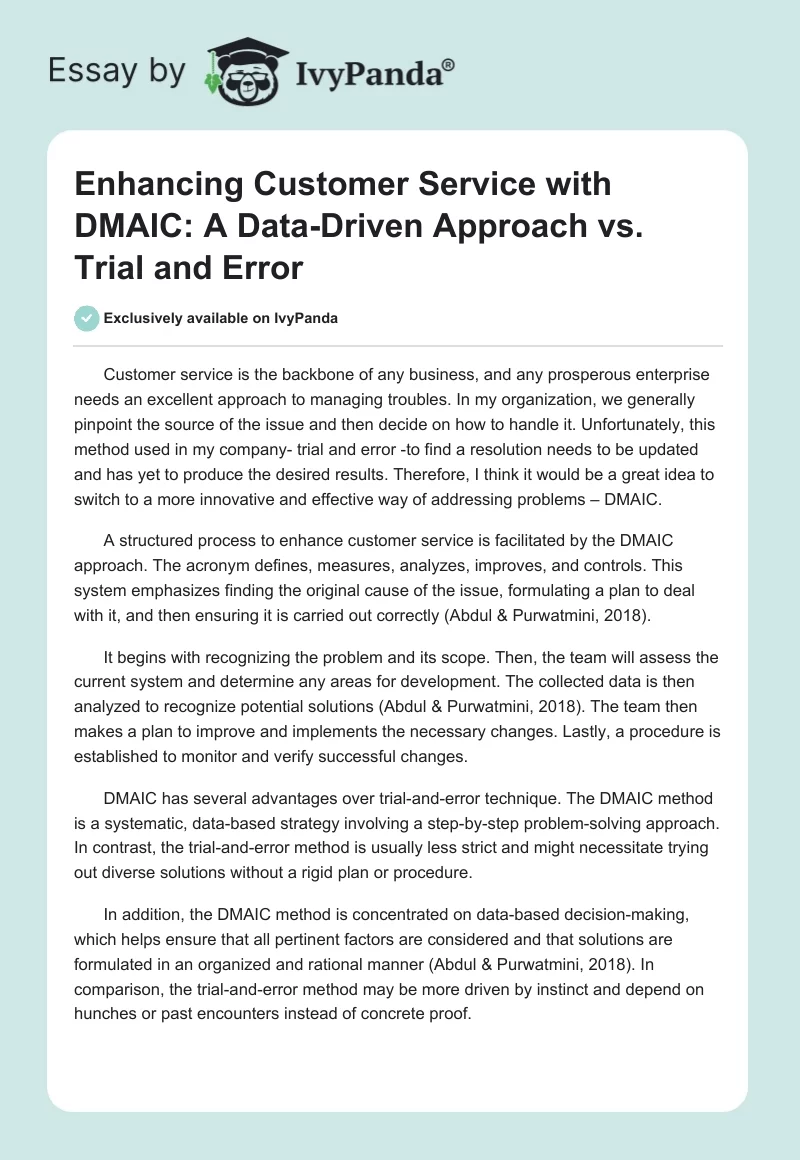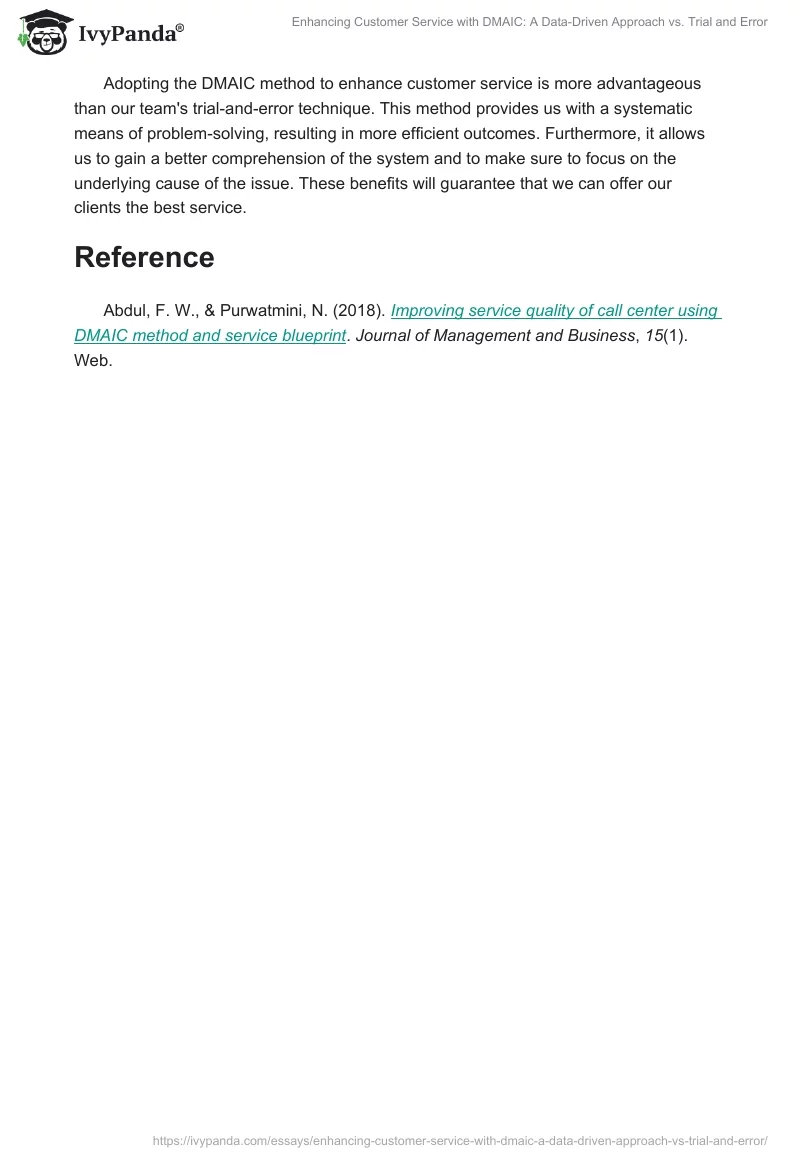Customer service is the backbone of any business, and any prosperous enterprise needs an excellent approach to managing troubles. In my organization, we generally pinpoint the source of the issue and then decide on how to handle it. Unfortunately, this method used in my company- trial and error -to find a resolution needs to be updated and has yet to produce the desired results. Therefore, I think it would be a great idea to switch to a more innovative and effective way of addressing problems – DMAIC.
A structured process to enhance customer service is facilitated by the DMAIC approach. The acronym defines, measures, analyzes, improves, and controls. This system emphasizes finding the original cause of the issue, formulating a plan to deal with it, and then ensuring it is carried out correctly (Abdul & Purwatmini, 2018).
It begins with recognizing the problem and its scope. Then, the team will assess the current system and determine any areas for development. The collected data is then analyzed to recognize potential solutions (Abdul & Purwatmini, 2018). The team then makes a plan to improve and implements the necessary changes. Lastly, a procedure is established to monitor and verify successful changes.
DMAIC has several advantages over trial-and-error technique. The DMAIC method is a systematic, data-based strategy involving a step-by-step problem-solving approach. In contrast, the trial-and-error method is usually less strict and might necessitate trying out diverse solutions without a rigid plan or procedure.
In addition, the DMAIC method is concentrated on data-based decision-making, which helps ensure that all pertinent factors are considered and that solutions are formulated in an organized and rational manner (Abdul & Purwatmini, 2018). In comparison, the trial-and-error method may be more driven by instinct and depend on hunches or past encounters instead of concrete proof.
Adopting the DMAIC method to enhance customer service is more advantageous than our team’s trial-and-error technique. This method provides us with a systematic means of problem-solving, resulting in more efficient outcomes. Furthermore, it allows us to gain a better comprehension of the system and to make sure to focus on the underlying cause of the issue. These benefits will guarantee that we can offer our clients the best service.
Reference
Abdul, F. W., & Purwatmini, N. (2018). Improving service quality of call center using DMAIC method and service blueprint. Journal of Management and Business, 15(1). Web.


